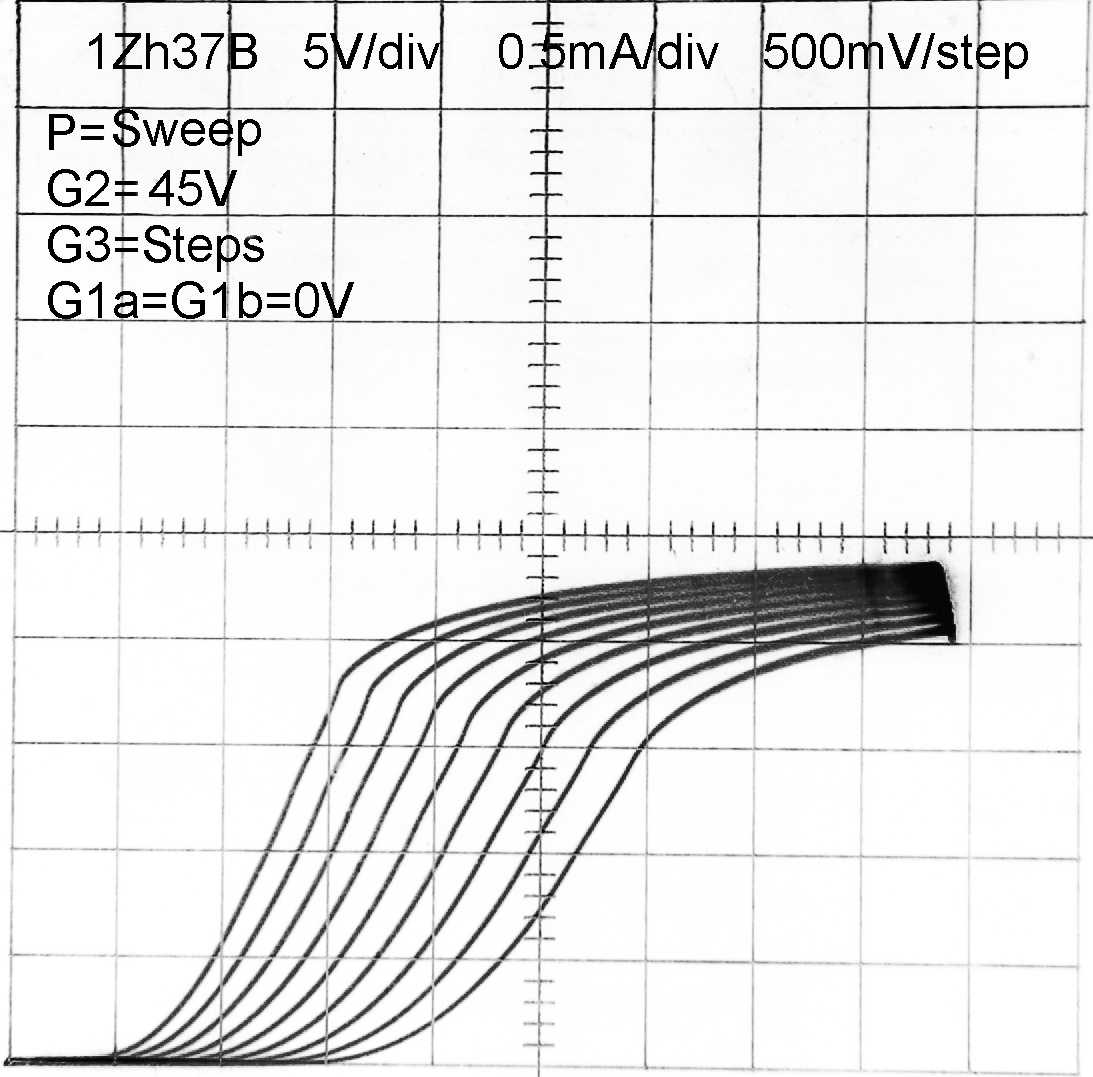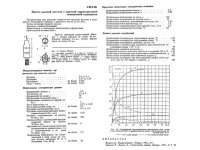It depends on your circuit. If your using filament bias then separate batteries will be needed.
They only have a 100hr life though. The datasheet says it is because the filaments don't last. I would try starving the filaments to see if it increases life. Don't expect them to last long though. They were designed for push to talk radios and proximity fuses so never needed a long life.
Cheers
Matt
They only have a 100hr life though. The datasheet says it is because the filaments don't last. I would try starving the filaments to see if it increases life. Don't expect them to last long though. They were designed for push to talk radios and proximity fuses so never needed a long life.
Cheers
Matt
They only have a 100hr life though. The datasheet says it is because the filaments don't last. I would try starving the filaments to see if it increases life. Don't expect them to last long though. They were designed for push to talk radios and proximity fuses so never needed a long life.
Cheers
Matt
Exactly. I tried a bunch of these wire ended small tubes and they didn't last at all. Plus the batteries - I used lead acid - ran down and needed constant recharging. As they lost the charge it would screw up the sound as well. I still have a bunch and I'm open to ludicrously small offers for them.
I hoped you would come in on this thread Andy. You gave me the CK5676 I have several years ago when I bought a pair of Beard output transformers from you.
At the time I had not tried DH valves and you said try these little things. You warned me the that they don't last but it got me hooked. Cheers
I now have a GM70 SE amp that sees winter use and have been playing with 4P1L for a while.
Good times and of course you were right about DH valves.
Cheers
Matt
At the time I had not tried DH valves and you said try these little things. You warned me the that they don't last but it got me hooked. Cheers
I now have a GM70 SE amp that sees winter use and have been playing with 4P1L for a while.
Good times and of course you were right about DH valves.
Cheers
Matt
Actually I planned on buying some russian subminiature low filament current dhts. In the meantime I managed to find 3 of those 5676s in my junk pile so I figured I would try to figure out this whole filament stuff mess with them first before I buy the russian ones.
This is my first attempt with dht so i figured battery for filaments and dc to dc converter for plates would do.
Anyone can comment on their experience with longevity and quality of the 1J (1ZH) tubes like 1j24,29,30 etc. ?
This is my first attempt with dht so i figured battery for filaments and dc to dc converter for plates would do.
Anyone can comment on their experience with longevity and quality of the 1J (1ZH) tubes like 1j24,29,30 etc. ?
Because it becomes boring.
4P1L here, 4P1L there, 4P1L everywhere...
1Ж24Б is a very interesting tube. It is one of the uniquely Russian rod pentodes. These tubes were developed in late 60s and have no Western analogs. In place of conventional electrodes there are rods, arranged in a way that they form electron beams and focus them on anodes. Rod pentodes have several advantages as audio tubes:
1. g2 currents are much lower than in conventional pentodes. This allows variable negative feedback from plate to g2. By connecting plate and screen through resistors, mu can be varied from 20 to 180. With straight connection, mu=20, Rp=20 K at 70 V and 1.5 mA.
2. Extremely thrifty directly heated filament: 1.5 V 13 mA, perfect for battery heating.
3. Virtually no microphonics, which is a plague of DHT voltage amplifier tubes.
4. Service life: at least 5,000 h (compared to 100 h of 5676).
4P1L here, 4P1L there, 4P1L everywhere...
1Ж24Б is a very interesting tube. It is one of the uniquely Russian rod pentodes. These tubes were developed in late 60s and have no Western analogs. In place of conventional electrodes there are rods, arranged in a way that they form electron beams and focus them on anodes. Rod pentodes have several advantages as audio tubes:
1. g2 currents are much lower than in conventional pentodes. This allows variable negative feedback from plate to g2. By connecting plate and screen through resistors, mu can be varied from 20 to 180. With straight connection, mu=20, Rp=20 K at 70 V and 1.5 mA.
2. Extremely thrifty directly heated filament: 1.5 V 13 mA, perfect for battery heating.
3. Virtually no microphonics, which is a plague of DHT voltage amplifier tubes.
4. Service life: at least 5,000 h (compared to 100 h of 5676).
Last edited:
lol
that's kinda what i was thinking
nice little tube
i wonder what it sounds like when pushed to cutoff or saturation
i recall seeing Ip-Vgc curves somewhere, and transition to cutoff at low Vgs was very smooth, not so much for transition from linear range to saturation
a couple of stages might work nicely as guitar preamp
that's kinda what i was thinking
nice little tube
i wonder what it sounds like when pushed to cutoff or saturation
i recall seeing Ip-Vgc curves somewhere, and transition to cutoff at low Vgs was very smooth, not so much for transition from linear range to saturation
a couple of stages might work nicely as guitar preamp
a couple of stages might work nicely as guitar preamp
Tcch... no "g" word here...
A pair of these, triode-connected, may work in a nice transformer-coupled differential preamplifier. With Ua=120 V, Ik=1 mA, Rp=16K, it will have 2.5x gain at 1/3 current of 01A. A 600:100K input transformer (e.g. UTC A-10 or HA-101) in reverse for balanced 600 Ohm output. DC imbalance will be easy to tackle with such low plate currents.
does anybody have Ip vs Vgc graph for 1J24B that shows the curves for positive Vgc as well ?
Graphs are here:
1Ж24Б, Tube 1Ж24Б; Rohre 1Ж24Б ID19748, Vacuum Pentode
Unfortunately, rod tubes are absolutely intolerant of positive grid voltages. With positive g1, electron beam focusing falls apart.
1Ж24Б is a very interesting tube.
That is interesting indeed! Have you made any noise measurements?
Have you made any noise measurements?
I havent, but it is there in the Russian data sheet. Equivalent noise resistance is less than 6 K for pentode. Such low value is due to high ratio of Ua/Ug2 resulting in low partition noise. Noise is lower than that in triode connection.
ok, so if we had the Iplate vs Vgk, for slightly positive Vgk (<10V or so), what would it look like ? Sharp decrease in plate current ? Burned grid ?
Somebody on the web once did a research on how much can grids tolerate before they destruct for a large number of various tubes, and verdict was that most of them can handle positive 10V without grid stopper, and only a few 20V.
So, I guess this is a family of tubes that hates positive Vgk.
Good to know, but I am having difficult time to believe it.
As they say, trust but verify, and I plan to, once I get my hands on some of those rod 1J tubes.
Somebody on the web once did a research on how much can grids tolerate before they destruct for a large number of various tubes, and verdict was that most of them can handle positive 10V without grid stopper, and only a few 20V.
So, I guess this is a family of tubes that hates positive Vgk.
Good to know, but I am having difficult time to believe it.
As they say, trust but verify, and I plan to, once I get my hands on some of those rod 1J tubes.
Good to know, but I am having difficult time to believe it. As they say, trust but verify, and I plan to, once I get my hands on some of those rod 1J tubes.
You know what - you may be right. In 1J24B data sheet, there is a curve for +1 V control grid voltage. It extends to plate voltage of 45 V, at fixed g2 voltage of 40 V. I don't know whether filament is grounded or floating. If it is grounded, the actual grid voltage is about +1 V or -1 V, depending on which side of filament supply is grounded.
I have read about intolerance to positive grid voltages in the Russian language article about rod tubes. If you look at the cartoon showing the principle of rod tube operation, the filament is located between two tightly spaced flat grid rods. Negative potential on grid rods squishes the space charge and narrows the electron beams. The narrower the beams, the more electrons fly past screen, and the smaller the screen current relative to plate current. With positive control grid, electron beams widen, more electrons hit the screen, and screen current becomes unacceptably high.
In conventional pentodes, low screen currents are achieved by alignment of g1 and g2. Aligned g1 creates shadow areas, so that more electrons can fly past screen. In rod tubes, shadowing is achieved by narrowing the electron beam, which depends on control grid being negative.
Attachments
- Status
- This old topic is closed. If you want to reopen this topic, contact a moderator using the "Report Post" button.
- Home
- Amplifiers
- Tubes / Valves
- Powering DHT Filaments

